Language
You can read the magazine in one of the following languages
Geolocation
You can read the global content or the content from your region
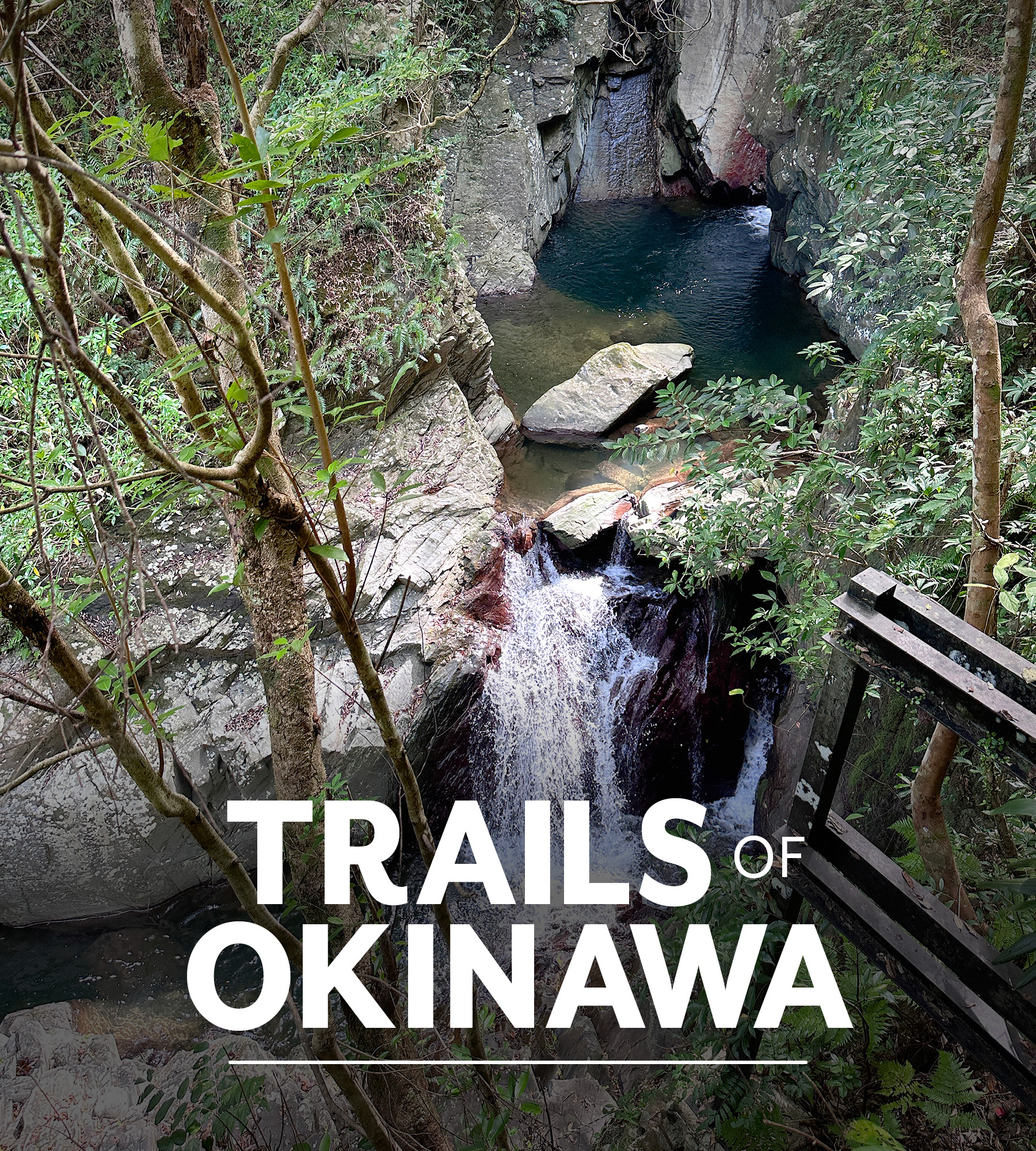
His eyes, devout and intent, fix on mine. His posture remains statue still, as if a wading bird about to spear its prey. He doesn’t even blink, for that might be a distraction.
I stare back, searching into a soul I know nothing about, yet here we stand, two fist-clenched strangers about to battle. Or are we? Sure, I could be taken out with one kick, but contrary to my naïve belief, karate is not about fighting. It’s about discipline and harmony.
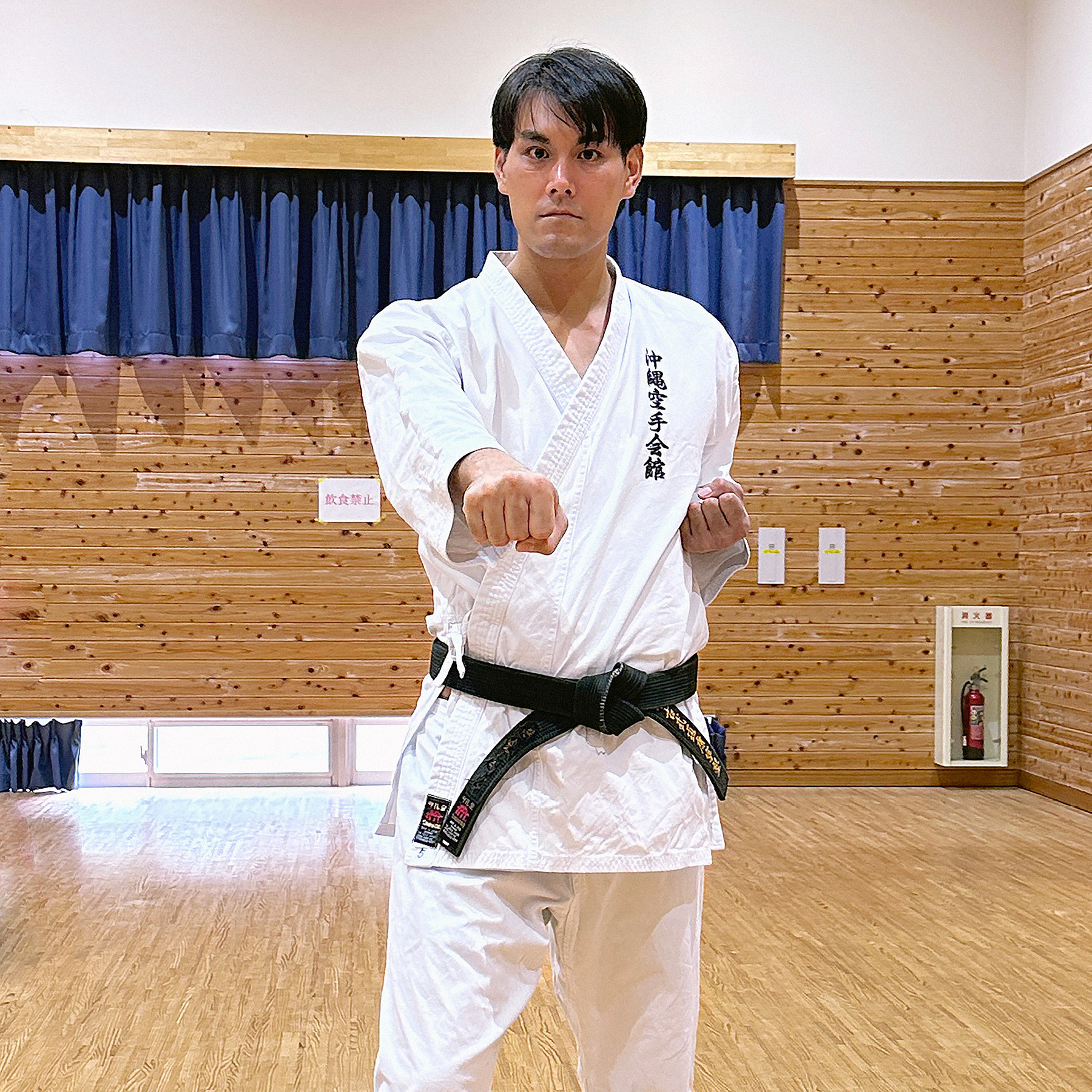
During the Ryukyu Kingdom era, karate was regularly taught to the civil servants of nearby Shuri Castle.
I’m at Okinawa Karate Kaikan in Naha, the capital of Okinawa, some 1,600 kilometers south-west of Tokyo. Okinawa is part of the Ryukyu chain of 160 islands, and the birthplace of karate. During the Ryukyu Kingdom era, karate was regularly taught to the civil servants of nearby Shuri Castle.
Fast forward to today, and this training academy draws karate enthusiasts from all corners of the world. The aim of the center is to share the essence of karate that has been practiced through time. I may not have the speed, strength or flexibility of Tokoyuku Uehara, my black belt instructor, but I do master how to focus on ritual and pose with the conviction of a warrior.
Tradition runs deep through the arteries of Okinawans. Having shed my karate garb, I am now being crowned with a traditional conical kubagasa hat made from the leaves of the fountain palm. Within a modest shipbuilding shed at Ōgimi village, Teppei Hentona keeps ancestral seafaring skills alive.
Hentona’s patient artisanal hands carve and build traditional wooden sabani sailing boats from local obisugi wood. Devoid of an engine or any metalwork, he even carves the nails from bamboo.
We then take a paddle in his unpainted boat through Shioya Bay. Pulling up at a deserted forest-backed beach, we sit and listen to the cicadas. Okinawan time ticks to an ancient beat.

On the middle of the island, cultures combine. Kin Town is home to Camp Hanson, one of several United States military bases in Japan. Okinawa was returned to Japan in 1972. And there is a clear American presence in modern-day Kin Town. Above ground, the streets buzz with bars and diners selling taco rice; Okinawa’s fusion dish of Japanese and American fare. And below ground, hides a highly-prized tipple unique to the prefecture.
Led by Ritsuko Tomimori from Okinawa Nature Office, we descend into banyan-root-ceilinged Awamori Cave. During World War II, the cave was used for hiding, but today, it rests in peace.
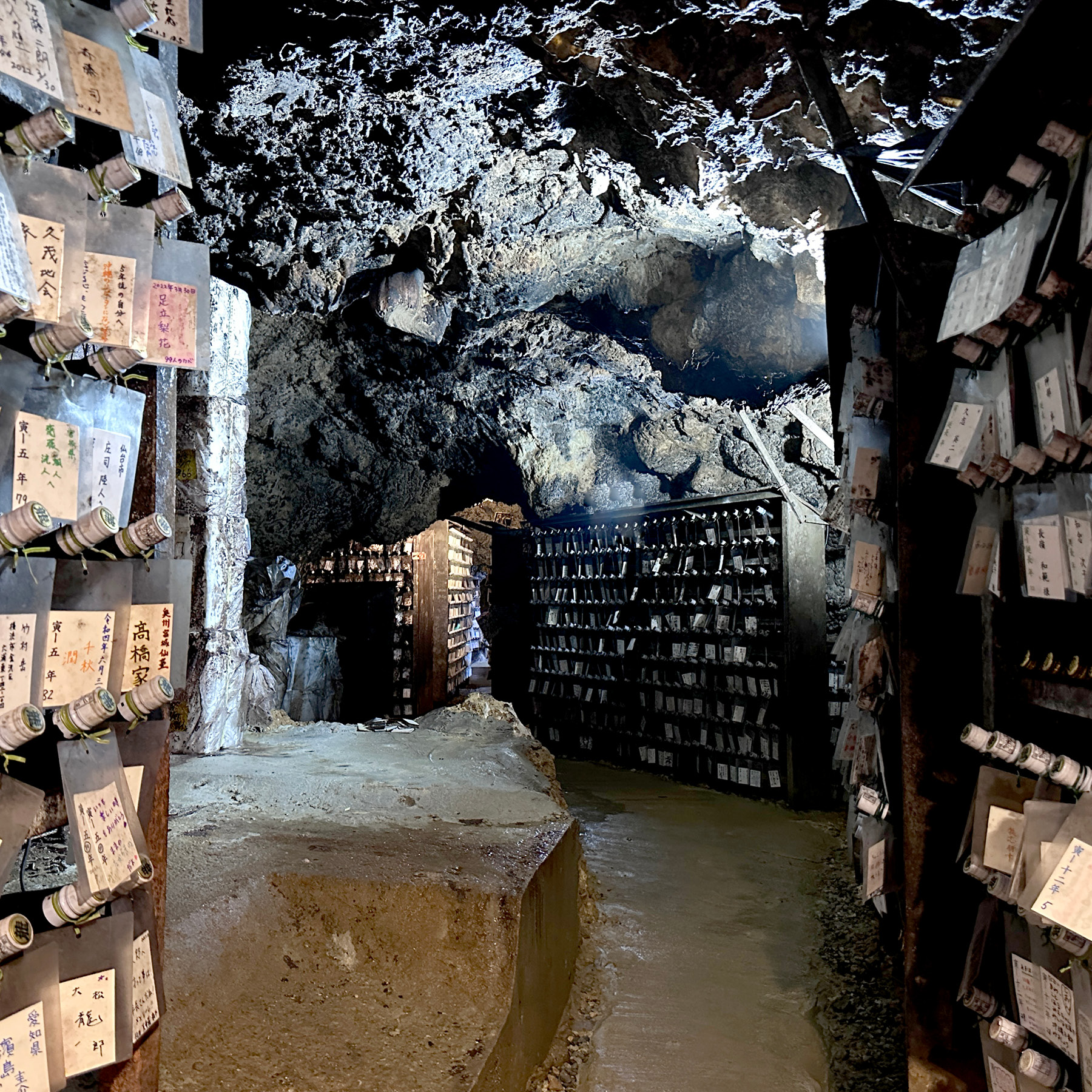
Among the 13,000 dated bottles, many bear the names and photos (some, of grandchildren) of those who will receive their Awamori when they come of age.
It looks like a labyrinthine library of fairy tales, only instead of books on the shelves, the cavernous vintage cellar houses corridors of aging bottles of Awamori, courtesy of the cave’s consistent 18 degrees Celsius. Okinawa’s version of Japanese sake is a potent (up to 40 percent alcohol by volume) non-brewed distilled liquor created from long-grain Thai indica rice, born during Ryukyu Kingdom times.
The cave cellar’s unique offering is that when visitors dine at the cave owner’s nearby Cafe Restaurant Choraku, they can purchase a bottle of Awamori as a special occasion gift for a friend or family member. Stored and aged for a number of years, it can be collected or shipped upon maturity, with a private tour of the cave (not open to the general public).
Among the 13,000 dated bottles, many bear the names and photos (some, of grandchildren) of those who will receive their Awamori when they comes of age. The bottles are commonly gifted for birthdays and anniversaries – a quintessentially Okinawan offering on the island.
East of Kin Town is the Okukubi River. Here, I share a kayak with Hiroto Nakama of Nature Mirai Experiences. Within minutes, we’re at the intertidal zone. It’s the only wetland on the island where four types of mangroves cohabit, including the white flower-tipped black mangrove.
Within the timeless swamp, gnarly, spindly mangroves dig their aerial toes into the brackish sediment, while their carbon dioxide-thirsty snorkels filter the air around us. Above, the fruits of red and black mangroves glow like fairy lights over soldier and fiddler crabs, and mudskippers and egrets scavenge for muddy morsels below. We slow our paddle to capture sightings of sandpipers and admire the turquoise feathers of a kingfisher resting on a branch.
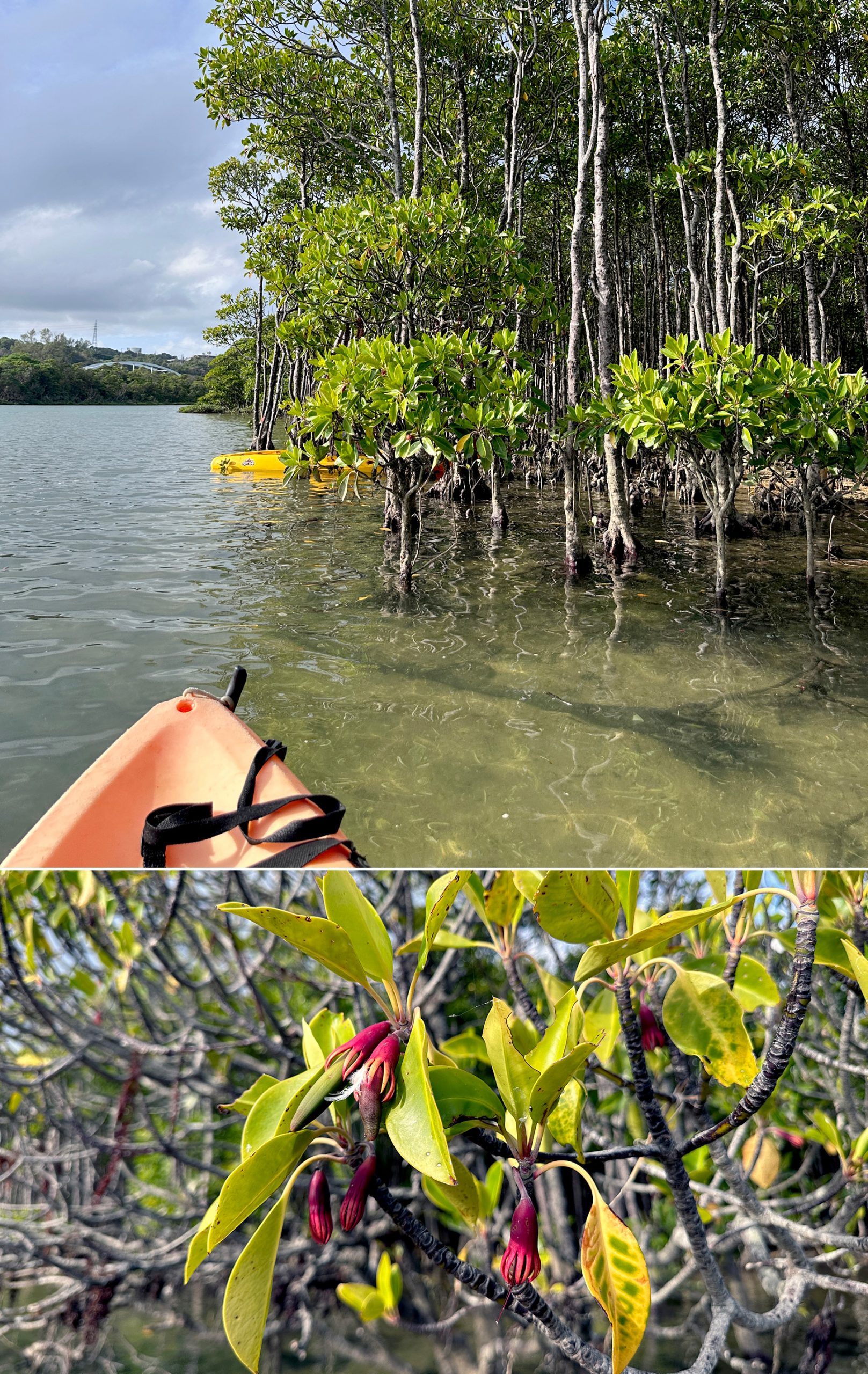
Reaching Yanbaru National Park in the island’s north, I meet local guide, Nihomi, for the Hiji Otaki Waterfall hike. The biodiverse jungle-like forest, while relatively small, is dense with more than 1,200 species of subtropical plants. It has no large predators, so it’s a nonstop gallery of surreal critters.
The one-hour butterfly-flecked trail along undulating stone and timber steps, and a 50-meter-long suspension bridge, takes almost three hours as we closely inspect its rare creatures.
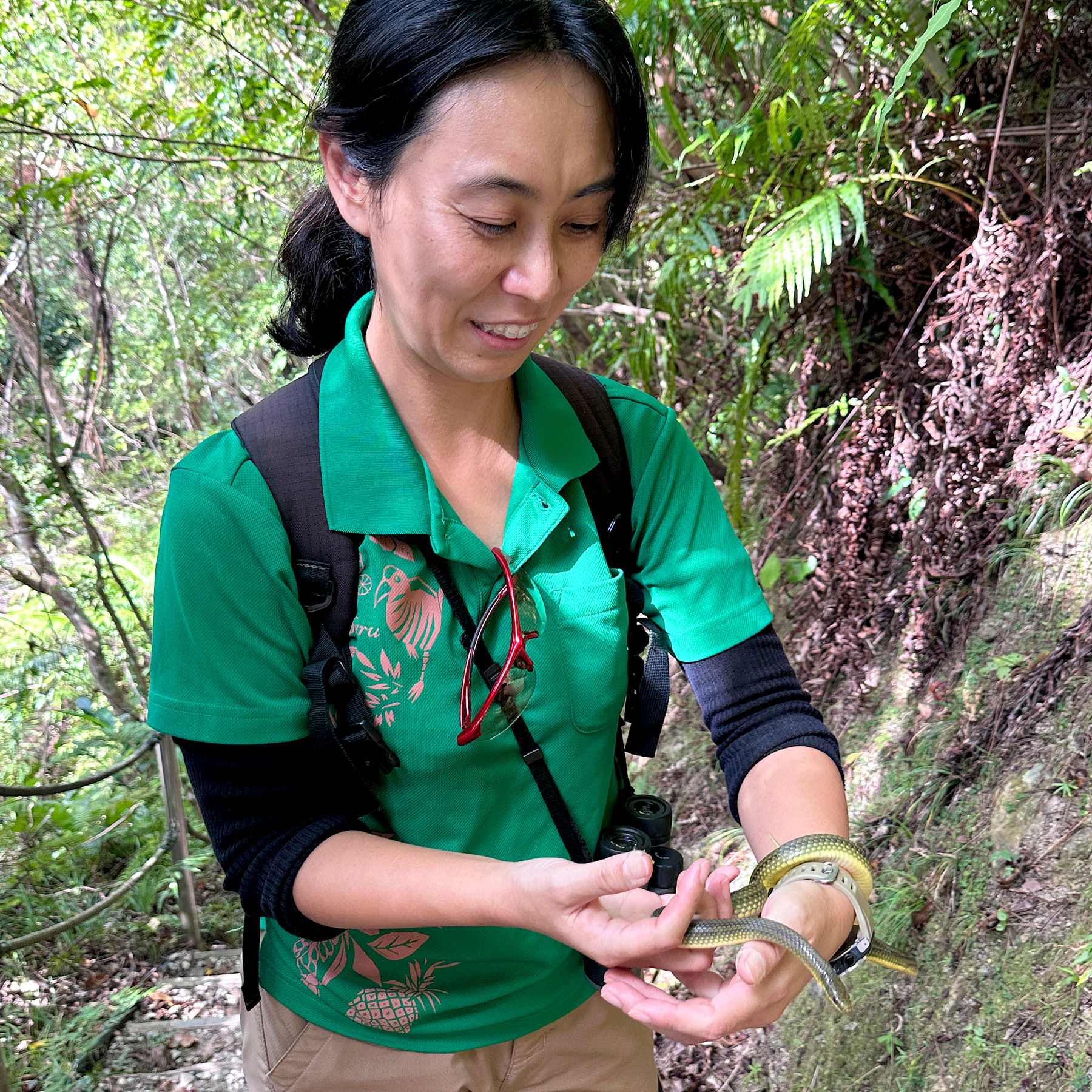
The biodiverse jungle-like forest, while relatively small, is dense with more than 1,200 species of subtropical plants. It has no large predators, so it’s a nonstop gallery of surreal critters.
Ryukyu Kajika frogs and Ryukyu tip-nosed frogs peep from rocky crevices. And we spot the footprints of the flightless and endangered Okinawa rail. We see the frighteningly handsome denkimushi, a spiky caterpillar dubbed ‘electric bug’ due to its venomous prickly stingers.
Also dangerous is the less attractive makude centipede. Joro spiders hang from deftly spun webs, flaunting their black and yellow legs – yes, venomous. But unfazed, animist Nihomi finds spirituality in the slender green tree snake that lands on her arm. It’s not venomous.
Now wading upstream through the knee-deep Hiji River, Nihomi points out herbivorous long-armed shrimp. Apparently, downstream, they are carnivorous. Nature is complex.
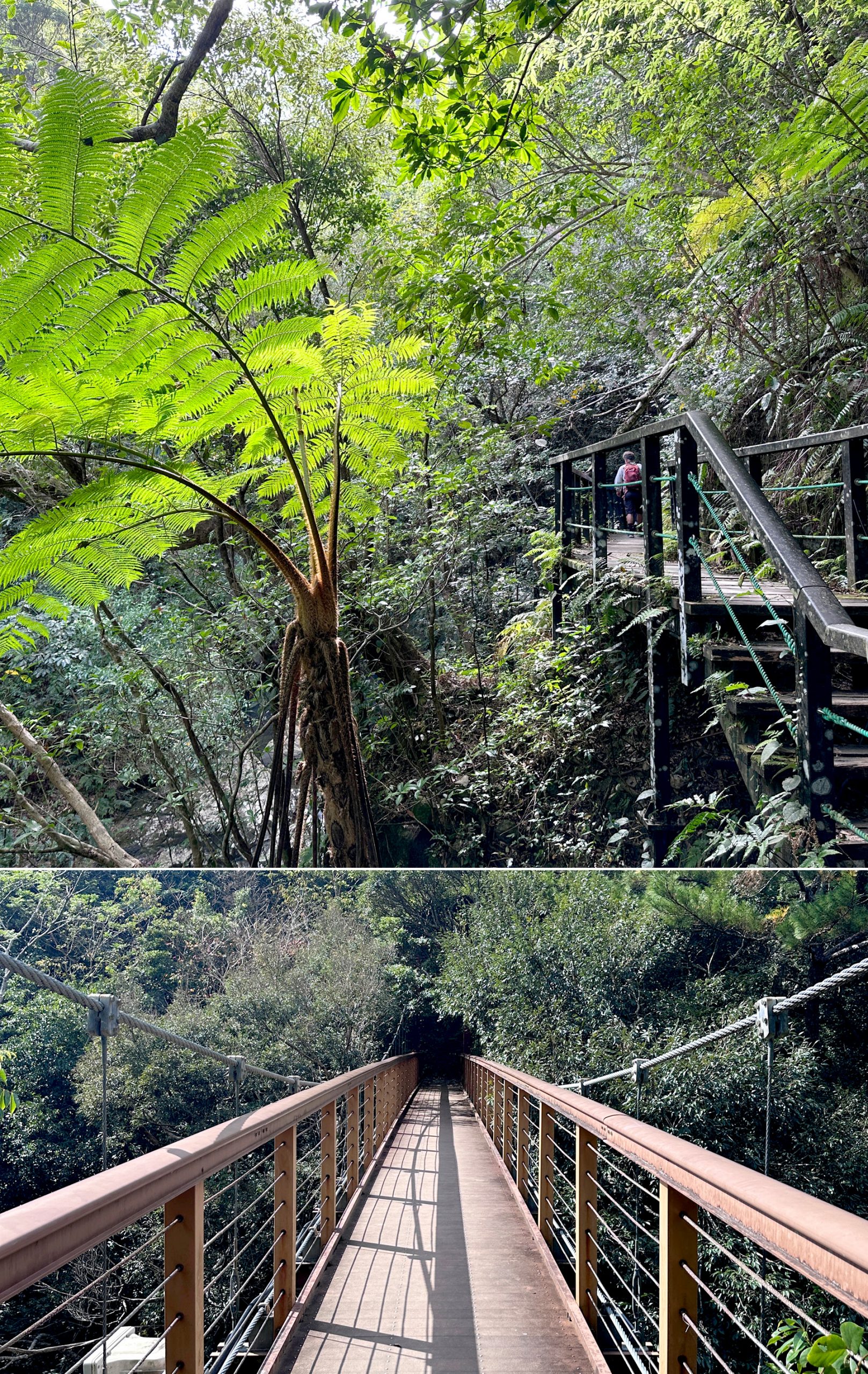
“In Okinawa, we feel the seasons through the sounds of the forest.”
– Nihomi
Leaving behind the shade of flying spider-monkey tree ferns (fossil ferns surviving for more than 100 million years), we follow a boardwalk to a platform overlooking the handsome 26-meter falls.
We lunch from a gozen box filled with a tofu-based patty marinated in red wine, vegetarian dumplings, curried sweet potato croquette, winged beans and okra ratatouille. Our chilled sugar cane cordial is sipped from cups fashioned from bishop wood.
Animist Nihomi closes her eyes in appreciation for nature. “In Okinawa,” she whispers, “we feel the seasons through the sounds of the forest.” Closing my own eyes, I sense the rumble of the cascades, and hear the trees rustle their autumnal leaves. It’s then that I feel it too.
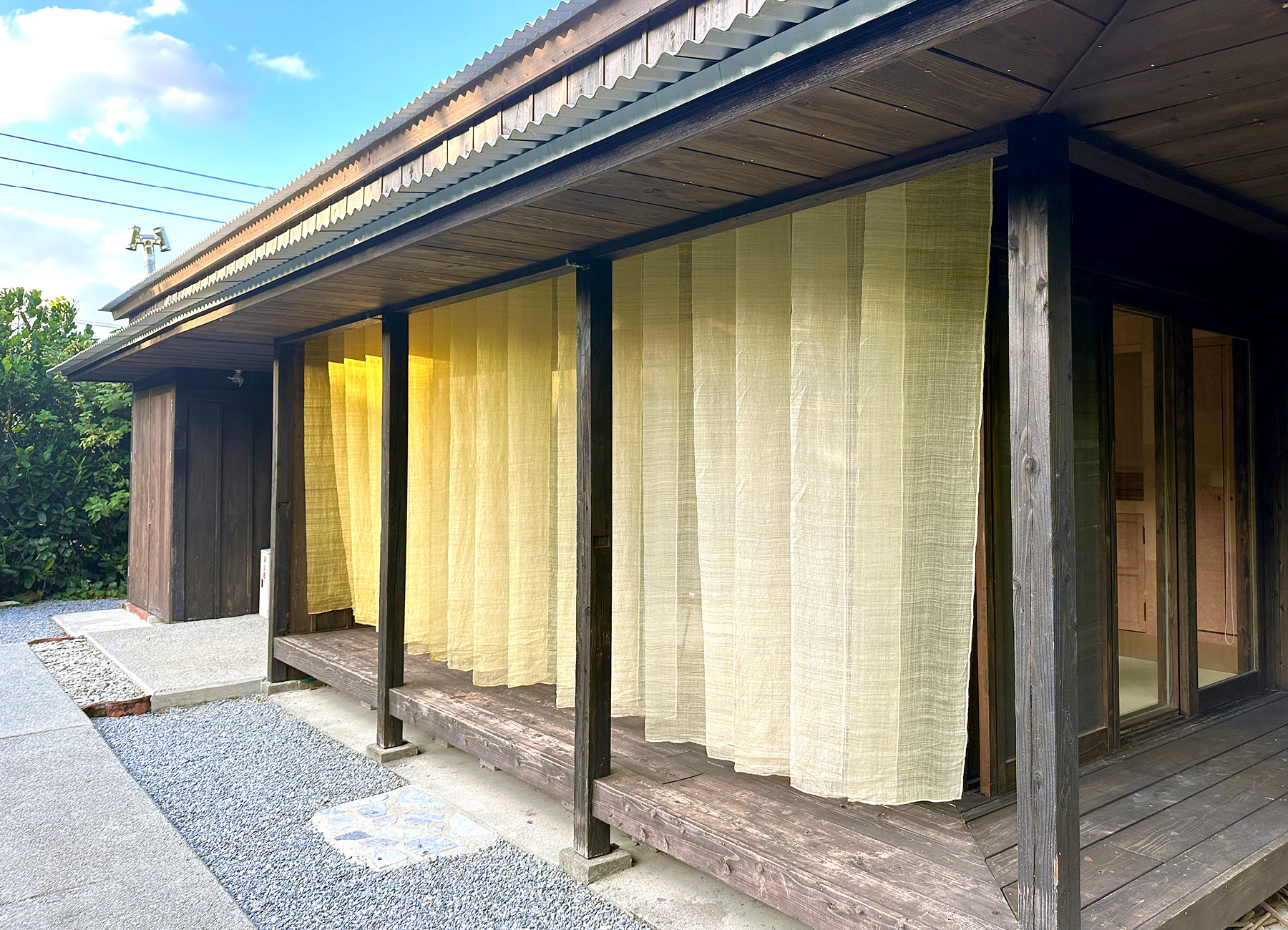
Where to stay:
ASBO Stay Hotel at Kin is an elegant property with an onsite onsen. It is also home to Alo Edesse Ryukyu French fusion restaurant specializing in degustation journeys through seasonal Kin Town-grown produce.
Family-run Nammei Shinshitsu Yanbaru Hotel in Jashiki village offers traditional Japanese accommodation, run by attentive and authentic villagers.